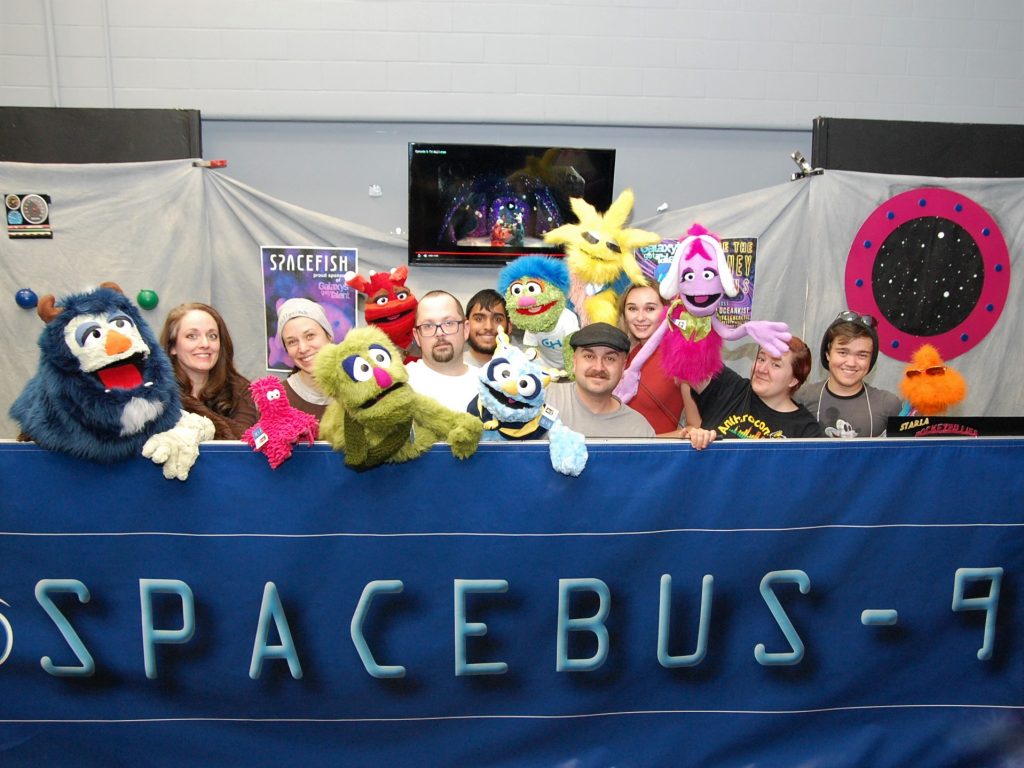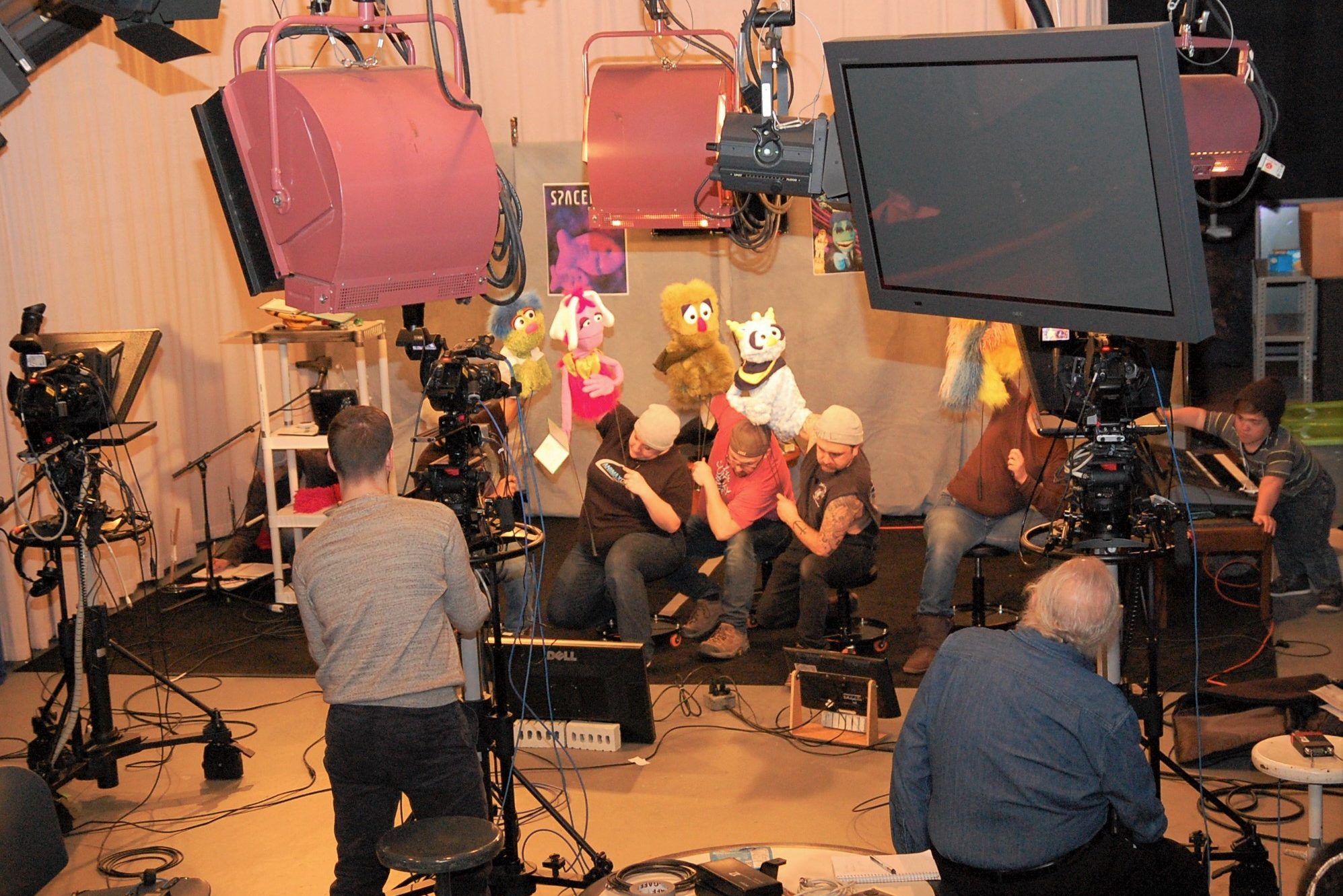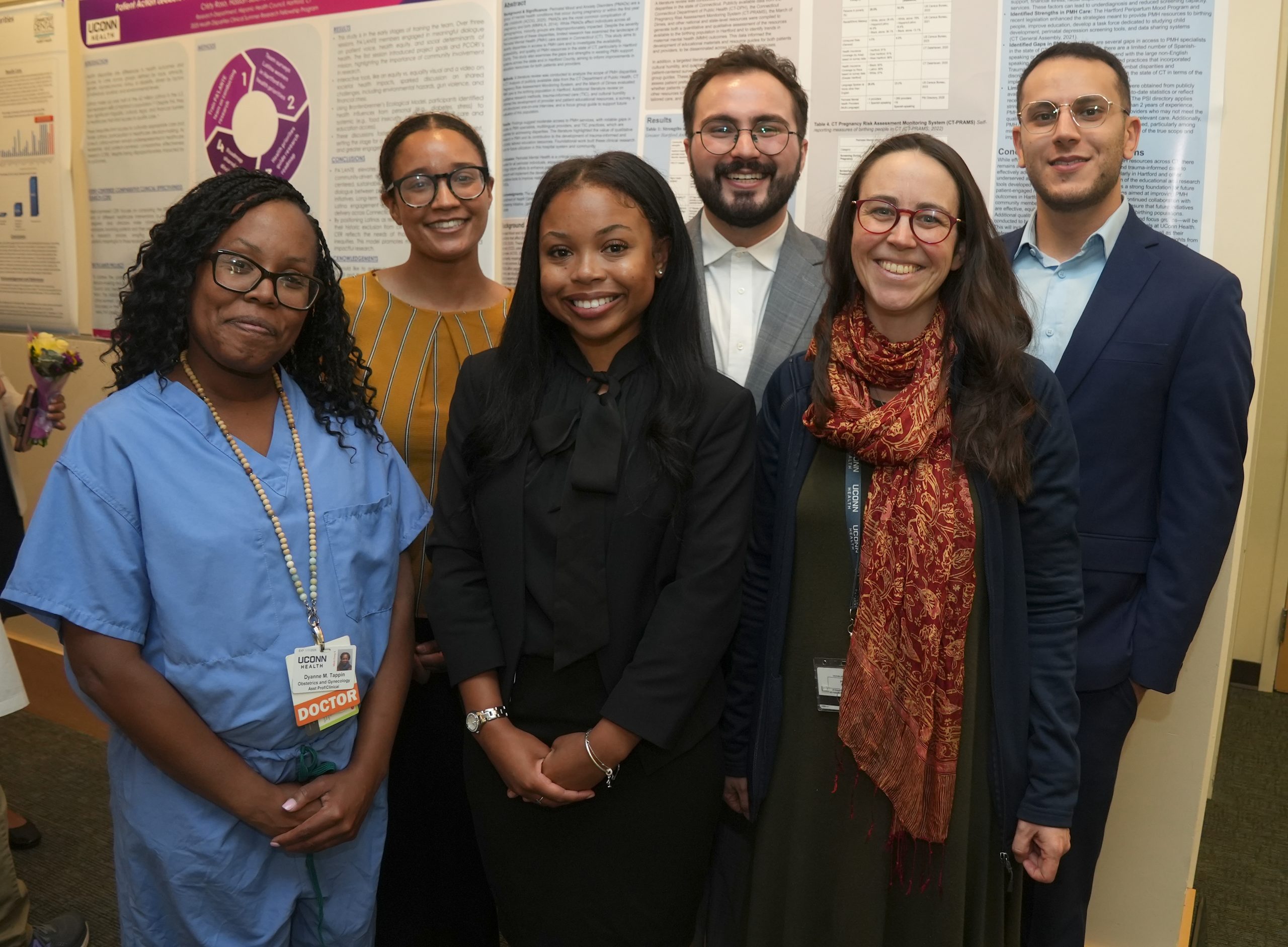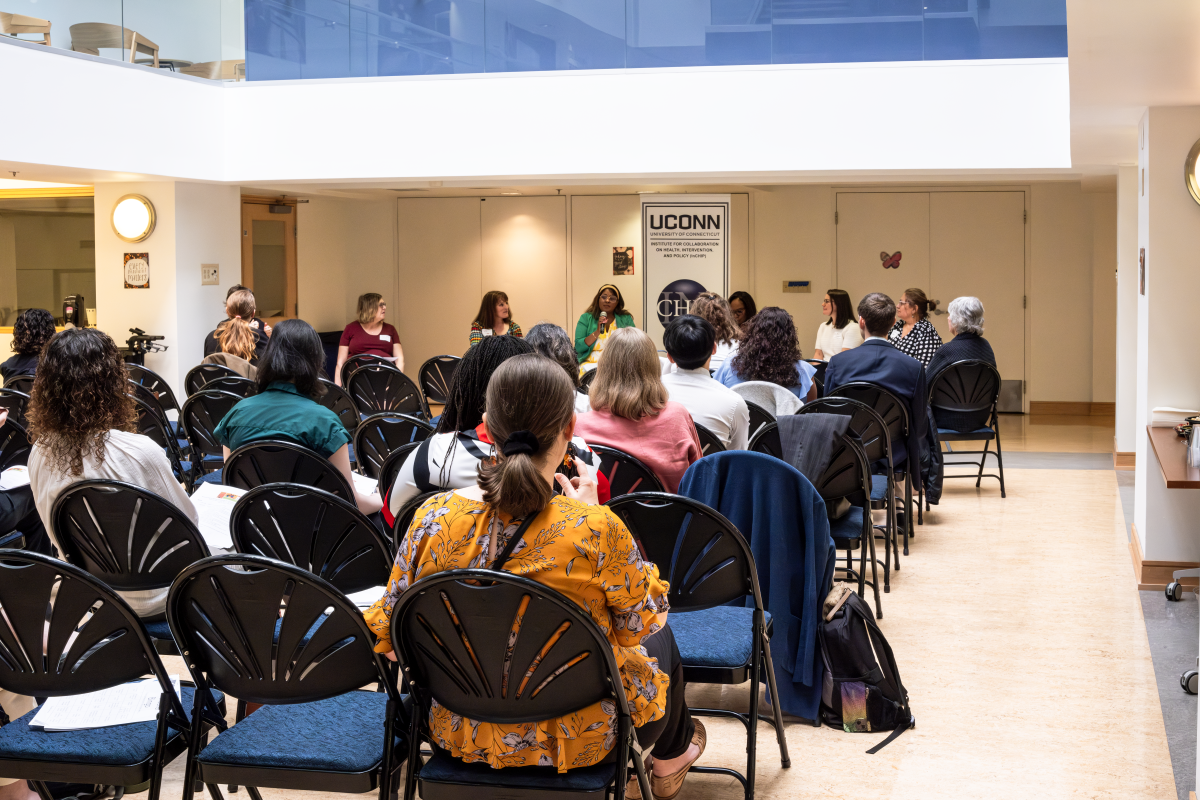Noel Williams and her troupe of University of Connecticut puppeteers were uncertain how most of the audience was reacting to the puppet show they were performing in the atrium of the Children’s Hospital of Philadelphia (CHOP) and broadcast over the hospital’s closed circuit television system, where many young patients watched in their rooms.
The performance of “Spacebus 9,” an original work created by Williams as her MFA project, was broadcast for five consecutive days, and children who could leave their hospital room increasingly began to make their way to see the show – in person.
“We started getting requests from the children asking if they could come and take pictures with the puppets,” Williams says. “We had a patient in a wheelchair come up to take a picture. She got out of her wheelchair and grabbed the hand of one of the puppets to hold for the picture and smiled. We were told she hadn’t smiled all week.”
The premise of Williams’s show is that a group of intergalactic creatures traveling to the “Galaxy’s Got Talent” competition has to make an emergency landing when their spaceship malfunctions and they land at CHOP. This allowed for live music, comedy, sketches, and the ability to incorporate some themes about being in a hospital, with guidance from the hospital’s Child Life program, which provides support for the young patients and their families during in-hospital treatment.
Williams developed “Spacebus 9” as her MFA project after volunteering at CHOP while doing an internship at Monkey Boys Productions, a Philadelphia-based multimedia entertainment production company that was building a puppet stage for the hospital.
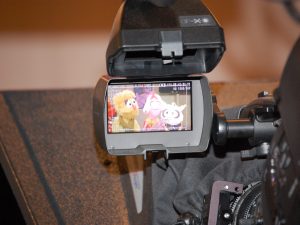
One of her objectives for volunteering at CHOP was to determine whether to pursue television puppetry or continue her live theater activities developed over nearly 15 years performing in improvised comedy and as a clown. At CHOP she learned about the broadcast center established in 2011 by the Ryan Seacrest Foundation, which is dedicated to enhancing the quality of life for seriously ill and injured children.
Creating a televised puppet performance was a challenge Williams set for her MFA project, which is aimed at both using skills learned in the puppet arts program and finding new areas to explore while developing the project.
In addition to writing a script that both told a story and addressed the experiences of children facing health issues, in collaboration with hospital staff Williams built puppets, helped build a set, and directed the cast on a television show with assistance from other puppet arts students. Development of the project began in 2017 and it was approved by the Dramatic Arts MFA Committee in early 2018, with performances in Philadelphia scheduled during the week of UConn’s spring break this past March.
“We don’t want students to do a project they can do without thinking. We say, ‘What are your passions?’ ‘How are you going to challenge yourself?’ ‘What are the things you need to learn in the process?’ ” says Bart Roccoberton, head of the puppet arts program. “Noel set that up in a glorious way.”
While the design and building of puppets is a familiar task for puppeteers, creating them from materials that can be cleaned and sanitized under hospital infection control protocols was not. Wood and foam are materials typically used in building puppets, but they cannot be disinfected, while plastic canvas and fabric can be cleaned. Rod puppets could be made from knitting needles and PVC and also can be cleaned. Williams incorporated such factors into her puppet character designs for “Spacebus 9.”
In the design of her characters, Williams also researched art therapies to include in her production. The design of each character reflected an element in nature, since photos of nature appear to be healing for patients: Starla is based on a flower, Sproadie reflects green hills, Googie is inspired by seashells, and Byron’s hair is like an ocean wave. “I wanted them to be an informed design, not random,” Williams says.
Likewise, singing is also seen as therapeutic, so live music was included in each episode, including a sing-a-long scene. Music was written by composer-musician Sarah LeMieux and CHOP music therapist Mike Mahoney. Puppet arts undergraduate student Noah Gray ’19 SFA arranged the music and played live during the performance of the show.
As with any live performance, there can be unexpected issues. The teleprompter and camera script cues were inadvertently switched; a monitor was out of sightlines for the puppeteers, who rely upon them to see their puppets framed properly on the television screen; one member of the crew was ill for two days. But the many weeks the students had worked together allowed them to quickly make adjustments.
“Because we had been in that mode of one thing after another, of equipment issues or people getting sick, when we had all these things that came at us at the hospital, it was: OK we’ll just adjust,” Williams says. “I come from an ensemble oriented background. The team was so good, they figured out what we needed to do.”
The CHOP staff and the patients who saw “Spacebus 9” reacted enthusiastically to the performance.
“Spacebus 9 brought a new element of programming that CHOP has never seen before,” says Matt Piontkowski, CHOP events and donations coordinator in the Child Life, Education, and Creative Arts Therapy Department. “Patients and families attended the show day by day leaving each show with a smile on their face.
“Immediately following the filming week, we had families stop by the studio asking when ‘Spacebus 9’ would be returning to CHOP,” he adds.
